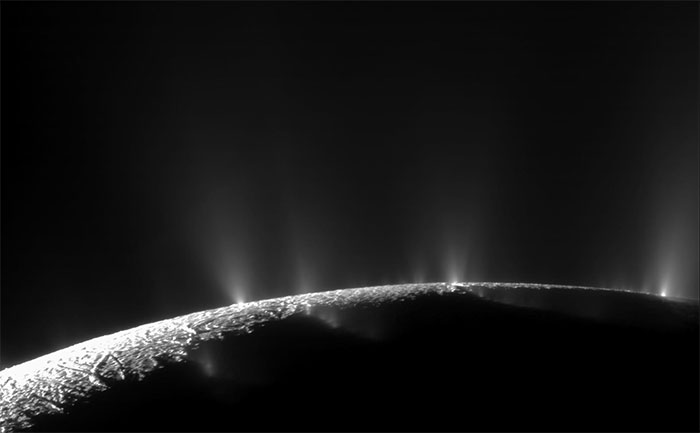If there are extraterrestrial beings on the moons of Enceladus or Europa, those beings would possess the same ancient trait as humanity.
According to Science Alert, scientists from the University of California, Riverside (UC Riverside – USA) have examined ancient Earth models and data about the planet’s earliest inhabitants to shed light on what simple and primitive life forms would be like and what might exist in their atmospheres.
Before the Great Oxidation Event (GOE) that transformed Earth, the planet’s atmosphere was vastly different, and life itself changed it. In other words, just like Earth, if there are extraterrestrial beings on some distant celestial body, they could “imprint” their presence on the atmosphere in the same way that primitive Earth organisms once did.

The surface of Enceladus, suspected to harbor extraterrestrial life – (Photo: NASA)
Primitive life on Earth utilized sunlight as “food,” as it was the only available energy source. Thus, they had to use something to capture solar energy.
Astronomical biologist Edward Schwieterman from UC Riverside, a member of the research team, explains: “In early Earth, energy could be very scarce. Bacteria and archaea found ways to harness solar energy without the need for complex biological molecules.”
The simple yet effective means they used was rhodopsin, an ancient type of protein that still exists today.
Despite the many layers of evolution, even humans still possess rhodopsin. It currently resides in the rods of our retinas, where it is responsible for vision in low-light conditions.
Living organisms in dark environments such as ponds and swamps also possess this remarkable protein.
Because it has persisted from primitive to modern organisms, scientists believe that if life exists in the distant universe, it must also possess rhodopsin.
By using models to track the development of rhodopsin, researchers constructed a family tree of rhodopsin dating back 2.5 to 4 billion years.
This ancient version of rhodopsin differs slightly from modern rhodopsin, primarily absorbing blue and green light; while modern rhodopsin absorbs blue, green, yellow, and orange light.
Rhodopsin also existed in a pre-ozone layer Earth, and the way ancient organisms used this rhodopsin to “consume” and “excrete” various substances into the environment would have significantly impacted the atmosphere.
Therefore, the presence of rhodopsin, whether directly or through its effects on the atmosphere, will be a critical indicator for us to determine whether extraterrestrial life exists on celestial bodies such as Jupiter’s moon Europa or Saturn’s moon Enceladus.
This research was recently published in Molecular Biology and Evolution.


















































